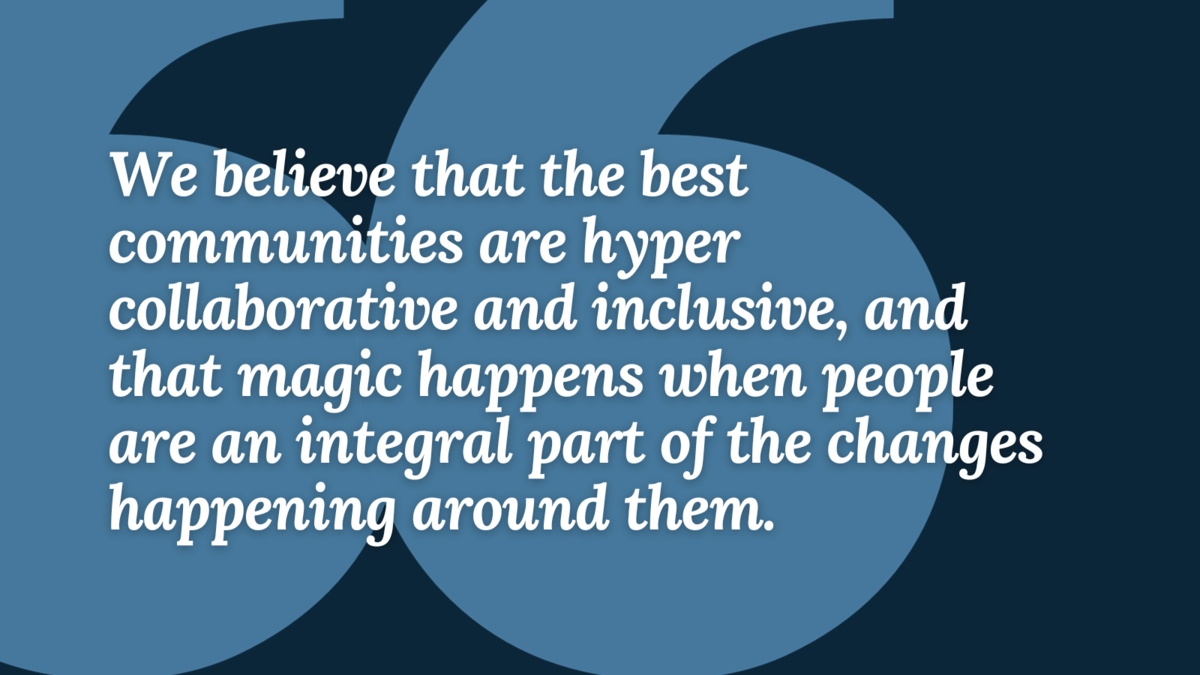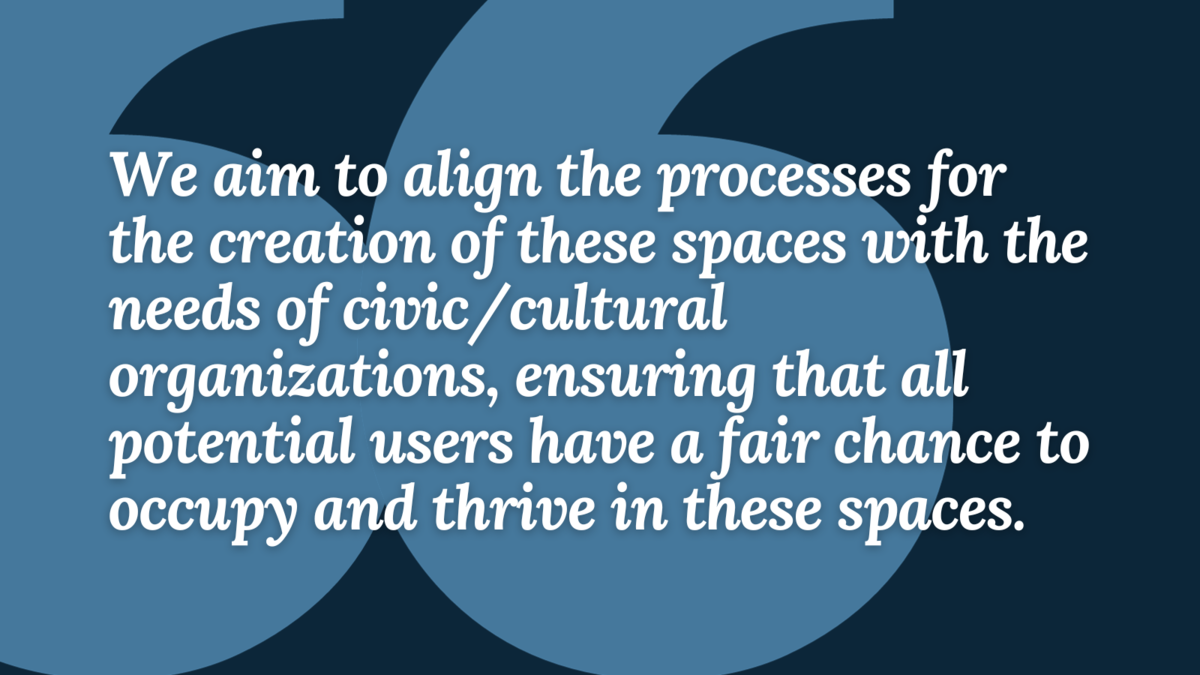Exploring Civic and Cultural Space Planning on Boston’s Waterfront
We spoke with Isenberg Projects, who were selected by the City of Boston to study waterfront civic and cultural space planning in Boston, about this upcoming project.
The Mayor’s Office of Arts & Culture is working to improve the delivery conditions and tenanting processes for Civic/Cultural Space made available through Chapter 91 Facilities of Public Accomodations. We spoke with Emily Isenberg of Isenberg Projects to dive into the work that Isenberg Projects will be doing in collaboration with the Mayor’s Office of Arts & Culture:
Could you begin by introducing yourself and Isenberg Projects?
I’m Emily Isenberg, the Founder and Creative Director of Isenberg Projects. I started Isenberg Projects twelve years ago, after a career in contemporary art led me to placemaking work. My work in social design and creative practice demonstrated an opportunity to bring creatives and organizations alike to participate in how we plan and adapt cities for the future.
Isenberg Projects is a creative consulting agency based in the Leather District that specializes in place-based work and community engagement. We work with clients to build and manage strategic cultural plans to activate their places.
We work as a translator alongside community groups, municipalities, and developers to ensure that neighborhood change supports the larger ecosystem of the existing community. We strive to shed light on the areas of overlapping interest between these stakeholders, and arrive at public commitments that are truly based in the community, rather than based on an assumption of authenticity.
What is the driving mission behind the work you do?
We believe that the best communities are hyper collaborative and inclusive, and that magic happens when people are an integral part of the changes happening around them. Through our relationships with cities, districts, developers, artists, small businesses, musicians, nonprofits, and cultural institutions, we are committed to amplifying voices and varying perspectives to foster shared value and active places.
What kind of work will Isenberg Projects be doing for the City of Boston?
At its core, this planning study will inform ongoing development projects with relevant civic/cultural, FPA, and affordable retail space commitments.
There are three big goals for this planning study. One is to make a comprehensive database of Chapter 91 FPA spaces, current and projected. This inventory will also allow the City of Boston to better understand the breadth of regulatory restrictions placed on FPA civic/cultural spaces. Isenberg Projects will be collecting information regarding key characteristics like the types of users currently operating these spaces and the overall size of existing and proposed civic/cultural spaces.
If the first goal is to understand the specifics about space, the second is to document potential tenants of these FPA spaces and their needs. This will require a broad look at the various types of civic/cultural users in the Boston area and identify the nuances of each user type. For instance the needs of an art education organization will likely vary from those of a makerspace or arts incubator. However, there may be overlap among the needs of the different user types. Exploring these needs will allow the City to better advocate for and require certain basic standards for all civic/cultural spaces and attract a diverse mix of users.
Lastly, we aim to align the processes for the creation of these spaces with the needs of civic/cultural organizations, ensuring that all potential users have a fair chance to occupy and thrive in these spaces. We will work with the City to identify real and perceived barriers to accessing available FPA spaces. This includes an examination of the RFI/RFP processes, lease terms, timing of when space will be available, among other operational and design barriers. Once identified, we will also provide the City with recommendations on ways to reduce and/or remove these barriers.
Why is this work important? How will it impact the waterfront communities, especially the Fort Point and Seaport areas?
We are in a crisis of losing our civic and cultural spaces in the City of Boston due to a lack of investment, a convoluted bureaucratic process, and a mismatch of expectations between cultural organizations, the city, and developers.
FPA spaces through Chapter 91 have for a long time provided opportunities for the community to gain new and continued access to civic and cultural spaces along our public waterways. Yet we have not assessed the impact of this tool for too long. It has been embedded too deep within a process layered by unforgiving bureaucratic priorities and disagreement on how we define community investment.
For cultural and civic organizations invited to tenant or program FPA spaces, we must consider how decisions made early on by developers, city planners, and designers have equity implications later on. We must agree on who and what this investment is for - the community itself, and what success looks like in this space.
What are some past projects that you expect will inform how IP approaches this project?
Isenberg Projects has worked with countless cultural programming partners in the past twelve years. From our work developing the Zone 3 cultural initiative in Allston, to working with Mass Development’s TDI program to create a new cultural space in Fall River opening fall 2023 to crafting a cultural plan for Boston Global Investors 10 World Trade in collaboration with Massport, our work has allowed us the privilege to work with over 600 nonprofits, cultural institutions, artists, and small businesses. We value these relationships and perspectives just as much as the perspectives of our clients. We have worked through difficult lease negotiations with both the developer and the cultural organization. We understand the challenges that arise when organizations occupy these cultural and civic spaces without clear expectations from the property owner around budget, active days per year, and target audiences.
What are some challenges you expect to encounter?
The biggest challenge at hand is to ensure that all voices are heard in this process, not just the ones that have historically been the loudest. This is ingrained in all the work that Isenberg Projects takes on, but it is especially important here. Many of the waterfront communities of Boston, namely the Seaport, have a perception that they’re designed for white, affluent individuals. Other areas like Fort Point are fighting to preserve the arts and culture community that built those neighborhoods. Through our work on this study, we want to understand what the current residents of these neighborhoods are feeling, but also seek to understand the barriers that make folks from other neighborhoods feel unwelcome.



